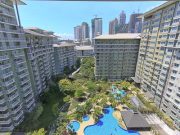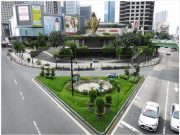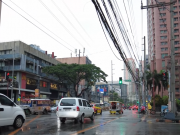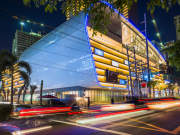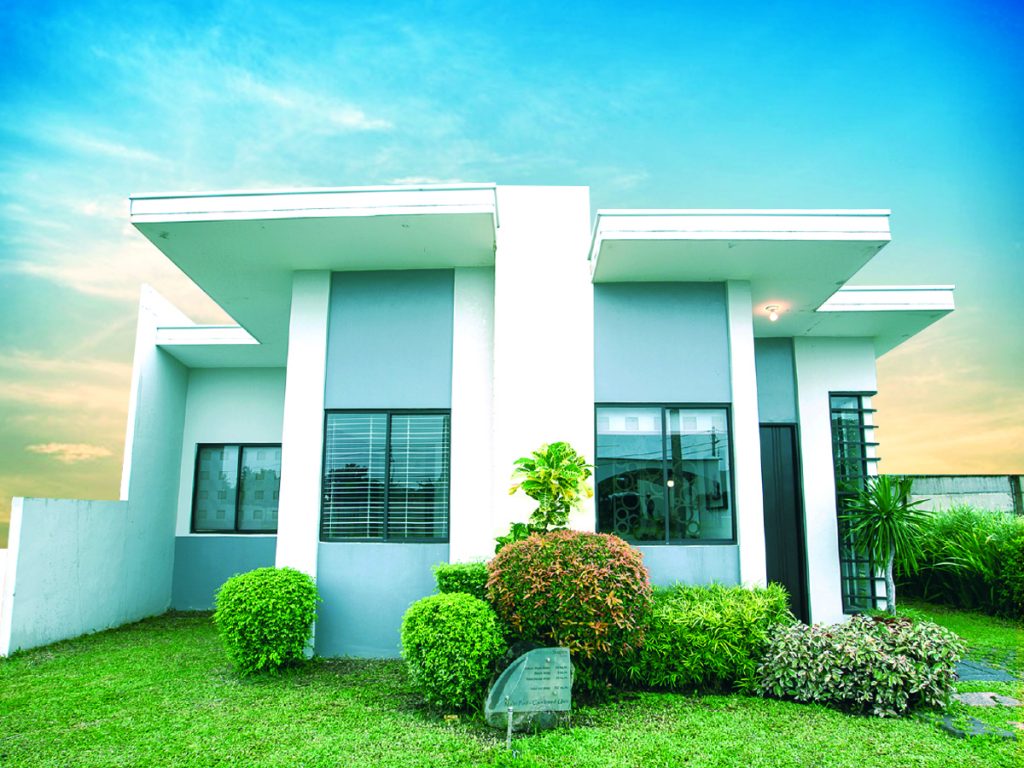
Executive Summary
By Sheila Viesca, Ph.D.
With insights from John Riad, CEO of HousingInteractive
The Greater Manila Area (GMA) is undergoing a quiet revolution in housing, with the new Filipino middle class leading the charge. As prices in Metro Manila continue to climb and space becomes a luxury, these homebuyers are looking beyond the capital, redrawing the map of desirable real estate. This shift is turning areas like Cavite, Laguna, Rizal, and Bulacan into hotbeds for middle-income homeownership.
What’s driving this change?
A compelling mix of affordability, better connectivity, and the desire for an improved quality of life.
At HousingInteractive, we’re right there, understanding and responding to this evolving demand. We’re connecting middle-income buyers with their ideal homes through targeted broker recruitment, smart property listings, and in-depth local market knowledge. The way people buy homes is changing fast, and to understand the future of Philippine housing, you need to understand the new middle class in the GMA.
Who Is the New Middle Class?
Forget outdated stereotypes; today’s middle class in the Philippines is diverse and dynamic, earning a monthly household income ranging from PHP 30,000 to PHP 80,000. This group includes
- Dual-income families: Often, teachers, sales managers, or small business owners.
- Overseas Filipino Workers (OFWs): Many are returning home with savings and the flexibility of remote work, looking to invest in their families’ comfort.
- Freelancers, BPO professionals, and digital workers: These individuals prioritize value and a good lifestyle over prime, expensive city locations.
At HousingInteractive, we’ve seen a clear shift: middle-income inquiries now drive 62% of our buyer leads in the Greater Manila Area. That’s a big jump—a 14-point increase since 2021. This tells us directly who your most important clients are, and they’re actively looking for homes right now.
Where Are They Buying?
The new middle class is not just searching for a house; they’re seeking a home in a community that offers more. They’re relocating to areas within the GMA that provide better value for their money, convenient access to Metro Manila through improved transportation, and thoughtful community planning. Consider these key areas:
| Cavite: | Hotspots include Bacoor, Imus, and Dasmariñas. |
| Laguna: | Check out Calamba, Biñan, and Santa Rosa. |
| Bulacan: | San Jose del Monte and Marilao are drawing significant interest. |
| Rizal: | Antipolo, Taytay, and Cainta are increasingly popular. |
These cities aren’t just cheaper; they offer a better living environment, with more open spaces and often better air quality.
Spotlight on Growth Areas
Let’s dive into some specific locations where the middle class is making a big impact:
1. Calamba, Laguna: A New Southern Stronghold
Calamba is booming, thanks to easy access via SLEX (South Luzon Expressway) and the upcoming PNR South Commuter Railway. It’s a magnet for those seeking convenience without the Metro Manila price tag.
| What’s driving demand? | Thriving industrial parks and busy BPO hubs are bringing jobs closer to home. |
| Top properties: | Two- to three-bedroom units with expandable lots are highly sought after. |
HousingInteractive shows that 68% of Calamba buyers are moving from Metro Manila. Townhomes priced under PHP 4.5 million with garden space are especially popular and lead to more successful sales.
2. San Jose del Monte, Bulacan: Transit-Linked Expansion
Get ready for growth in Bulacan, particularly in San Jose del Monte. The nearing completion of MRT-7 is a game-changer, promising quick rail connectivity to Quezon City.
| What’s available? | Three-bedroom homes typically range from PHP 2.4 million to PHP 3.3 million, offering great value. |
| Who’s buying? | You’ll find many teachers, civil servants, and young families buying their first homes here. |
With better rail access, listing views on HousingInteractive’s platform for San Jose del Monte have surged by 53%.
3. Bacoor, Cavite: Gateway to the South
Bacoor remains a prime location, serving as a convenient gateway to the south.
| Infrastructure advantages: | CAVITEX (Cavite Expressway) and the LRT-1 South Extension make commuting a breeze. |
| In-demand properties: | Townhouses priced between PHP 3.5 million and PHP 4.8 million are quickly snapped up. |
| Hotspots: | Focus on Molino and Niog, offering easy access to Las Piñas and Parañaque. |
Broker success: HousingInteractive brokers report that Bacoor is a top closing location, especially for working couples based in the GMA.
What the GMA Middle Class Wants in a Home
Understanding what truly matters to these buyers is crucial for success. They’re not just looking for a roof over their heads; they’re looking for a lifestyle. Their core preferences include
- Functional home offices and expandable layouts: The rise of remote work means dedicated spaces for work are a must-have. They also love homes that can grow with their families.
- Secure, low-density neighborhoods: Safety and a sense of community are paramount.
- Proximity to essentials: Easy access to schools, hospitals, and public transport is a major selling point.
- Reliable utilities: Fiber internet and consistent water and electricity are non-negotiable.
| Here’s a tip: Properties meeting three or more of these criteria generate 2x more buyer engagement on HousingInteractive’s digital platform. |
Why GMA is Ideal for the Middle Class
It’s simple: the GMA offers a compelling package that Metro Manila often can’t match for this segment.
| Affordability: | You’ll find significantly more competitive prices compared to Metro Manila. |
| Livability: | Enjoy better air quality, more space, and communities designed for walking and a healthier lifestyle. |
| Access: | The expanding road and railway networks are making commutes easier and faster. |
| Financing options: | They have great choices through Pag-IBIG, banks, and developer pre-selling offers. |
The average budget for these buyers is around PHP 3.6 million, and pre-selling options are particularly attractive due to their affordability.
Public-Private Initiatives Boosting GMA Development
The growth in GMA isn’t accidental. It’s a result of strong partnerships between private developers and the government. These collaborations are crucial for building the infrastructure and communities that the new middle-class desires. Key highlights include:
- Rail investments: Major projects like MRT-7, the North-South Commuter Railway (NSCR), and the LRT-1 extension are transforming connectivity.
- Road networks: Enhancements like Skyway Stage 3, SLEX TR4, and the NLEX-SLEX Connector are easing traffic and improving travel times.
- Mixed-use township zoning: Local Government Units (LGUs) and regional councils are actively supporting the development of integrated communities.
These partnerships directly lead to reduced congestion, boost confidence for developers, and ultimately increase property values in GMA municipalities.
Talk of the Townships: Emerging GMA Living Models
Middle-class buyers are increasingly drawn to innovative living models that offer more than just a house. They’re looking for comprehensive communities:
| Micro-townships: | These offer the convenience of schools, clinics, and retail within walking distance. |
| Green subdivisions: | Think bike lanes, lush parks, and homes designed to be solar-ready. |
| Mixed-use vertical communities: | Mid-density towns are seeing vertical developments that blend residential with commercial spaces. |
Developers are now incorporating energy efficiency, robust security, and smart home technology into their designs, which truly appeals to younger, environmentally conscious families.
Meet Your New Buyer Personas in GMA
To effectively promote properties, you need to understand the people you’re talking to. Here are some key buyer types you’ll encounter in the GMA:
- The Remote-Ready Couple: They need two home offices, rock-solid broadband, and a location close enough to Metro Manila for occasional visits but far enough to avoid the city hustle.
- The OFW Returnee: Often looking for a duplex, they might plan to live in one unit and rent out the other for passive income.
- The City-to-Suburb Migrant: These clients are upgrading from a condo studio unit to a family-friendly house, prioritizing a garden and dedicated parking.
At HousingInteractive, buyer profiles are used to enhance smart filter systems, making it easier to match clients with their ideal homes.
How HousingInteractive Supports Your Sales Journey
We’re committed to helping you succeed in this new market. HousingInteractive offers powerful tools to serve the middle-class segment:
- Enhanced search filters: Quickly find properties within specific GMA townships and filter by commute times.
- Customized mortgage calculators: Help your clients understand their Pag-IBIG and bank loan options.
- Instant connect chat tools: Bridge the gap between you and Browse buyers, allowing for quick responses.
- Broker mapping: We connect you with listings closest to your location, making site visits more efficient.
Our Broker Expansion Strategy Across GMA
We know success comes from having the right people in the right places. That’s why HousingInteractive launched our Broker Onboarding Program to:
- Recruit licensed agents with deep knowledge of specific GMA submarkets.
- Provide essential tools for mobile responsiveness and transparent client interactions.
- Incentivize performance through close-rate bonuses and prioritized leads.
As CEO, John Riad puts it,
It’s not just about having listings—it’s about having the right people in the right areas.
We now have dedicated teams in Calamba, Bacoor, and San Jose del Monte, ensuring faster site visits and building stronger client trust.
Success Story: Broker Spotlight—Rizal Region
Meet Grace Ramirez, a new broker who joined our GMA expansion program focusing on Rizal Province. She closed 11 listings in Taytay within just 90 days. What’s her secret?
- Deep local network: She knows the developers and communities inside out.
- Daily listing updates: She leverages the HousingInteractive CRM to stay on top of new properties.
- Guided site visits and virtual showings: She caters to clients, including OFWs, by offering flexible viewing options.
Grace shares,
I used to rely on foot traffic. Now, I have targeted leads every morning.
This is the power of our program.
Understanding Financing Behavior in GMA
Financing is a key part of any home purchase. For GMA middle-class buyers, here’s what you need to know:
- Pag-IBIG: This is the primary loan source for 60% of our GMA clients, so familiarize yourself with their processes.
- In-house developer financing: This is common for pre-selling properties.
- Bank loans: Buyers often secure these with fixed amortization over 15 to 25 years.
Many new GMA buyers require significant assistance in understanding the documentation and structuring their payments. Be ready to guide them through the process.
Looking Ahead: Trends in GMA Housing
The GMA market is always evolving. Here’s what we expect to see more of:
- Modular home offerings: Expect more affordable options under PHP 2.5 million, perfect for starter families.
- More duplexes: These offer great potential for passive income, appealing to those looking to maximize their investment.
- Vertical suburban villages: Combining BPO offices with mid-income residences, these communities will offer true live-work-play environments.
By 2026, HousingInteractive anticipates that over 50% of total monthly buyer leads will come from GMA’s outer cities. This is where the future of housing is headed.
LGUs Leading the Way: Smart Urbanism in GMA
Local government units (LGUs) across the Greater Manila Area are actively shaping the future of housing. They’re implementing progressive housing policies, boosting infrastructure, and driving urban planning initiatives to meet the specific needs of the middle class.
- Antipolo has introduced e-permitting systems to speed up residential building approvals.
- Santa Rosa, Laguna, has reformed its zoning codes to encourage developers to include green spaces and accessible roads in their subdivisions.
- San Jose del Monte is collaborating with the Department of Transportation (DOTr) to align housing developments with new transport stations, fostering transit-oriented living while preserving suburban charm.
Our developer partners confirm that:
- 4 out of 5 prefer working in LGUs with digital processing systems.
- Projects approved under fast-tracked urban integration schemes sell out 35% faster.
- LGUs offering tax holidays or permit incentives attract more mid-scale developers targeting the GMA middle class.
These strong partnerships are creating a more competitive and livable landscape for homebuyers in the region.
Buyer Feedback: What Middle-Class Clients Value Most
We regularly survey our GMA buyers, and their feedback is clear. They value transparency, responsiveness, and deep local knowledge.
- Transparent pricing: Hidden fees and confusing paperwork are major frustrations. Be upfront and clear about all costs.
- Broker responsiveness: Clients close faster when you can arrange site visits within 72 hours of their inquiry. Timeliness matters!
- Community insight: Information about nearby schools, hospitals, and transport options influences their final decision more than interior finishes. Be a local expert.
As Jasper L., a BPO supervisor from Antipolo, shared,
We found our home faster because our broker walked us through the commute, helped with loan paperwork, and even gave tips on which ISP to use.
Our data shows that for listings rated 4.5 stars and above:
- 89% had broker chat responses within 30 minutes.
- 77% featured detailed neighborhood highlights.
- 82% offered financial planning support through partnered mortgage advisors.
This highlights the crucial blend of technology and human connection in successfully guiding GMA homebuyers.
Developer Insights: The Middle-Class Buyer in GMA
Developers are seeing a significant shift in the middle-class buyer. They are:
- More discerning: Buyers now compare up to six different properties before making a shortlist. They do their homework.
- More demanding: They expect features like fiber-ready units, provisions for solar panels, and designs that are resistant to flooding.
- More digitally informed: They arrive prepared, often with financing plans in mind and having already checked Google Maps reviews.
A regional manager for Lumina Homes in Cavite noted,
Today’s middle-income buyer is no longer passive. They’re researchers, decision-makers, and partners in the design process. You can’t just sell; you have to help them project 10 years ahead.
This is why developers across GMA are now:
- Offering digital walkthroughs as a standard feature.
- Designing homes with flex zones that can adapt for work or learning.
- Installing rainwater harvesting systems and LED street lighting as added value.
HousingInteractive’s Roadmap for GMA 2025 and Beyond
To stay ahead of the curve, HousingInteractive is continuously innovating:
- Geo-targeted campaigns: HousingInteractive is rolling out campaigns to highlight hyper-local listings in areas like Tanza, Marilao, and Tanay.
- LGU partnerships: We’re working with LGUs to support affordable housing initiatives.
- Mobile-first listing builder: We’re creating tools for brokers in far-flung GMA suburbs to easily upload and manage listings on the go.
- Digital skills bootcamp: We’re launching a bootcamp to equip our newly onboarded agents with essential digital skills.
John Riad, our CEO, emphasizes,
Our mission is not just to list properties—it’s to accelerate homeownership. That means equipping our platform, our brokers, and our buyers.
We expect GMA-based listings to make up 65% of all active transactions on HousingInteractive by mid-2025.
Conclusion: Greater Manila’s Real Estate Future Is Middle Class
The new middle class isn’t just a market segment; they are the driving force behind the current housing boom in the Greater Manila Area. Their choices are actively shaping cities, influencing what developers build, and pushing the entire real estate industry to adapt and evolve.
With our extensive network, in-depth listing intelligence, and expanding partnerships with brokers like you, HousingInteractive is at the forefront of this exciting transformation. We’re making homeownership in the GMA accessible, actionable, and empowering for thousands of Filipinos.
Are you ready to connect these eager homebuyers with their perfect homes in the Greater Manila Area?



